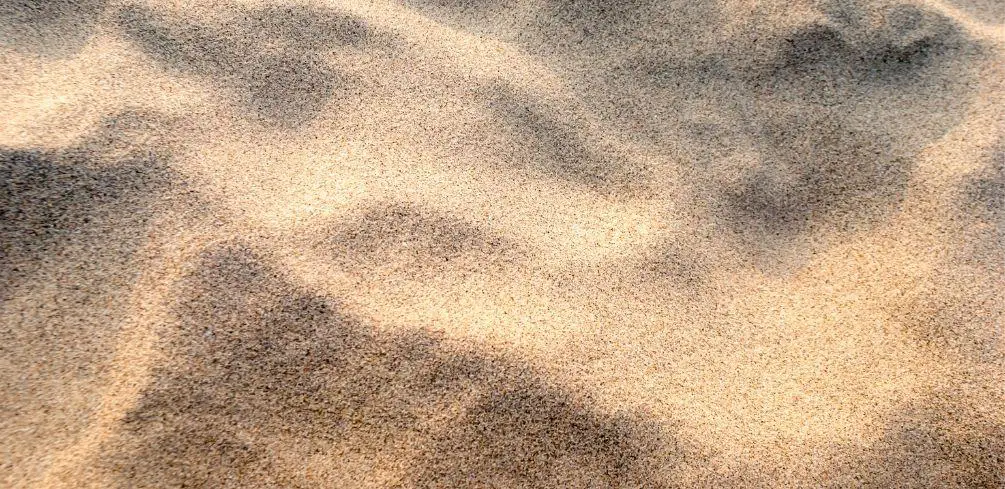If you’ve ever gone to the beach, you know how different sand can be. From the soft powdery white sand beaches of the Caribbean to the red sand deserts of Africa, there’s an incredible variety of sand around the world.
But what makes them so different?
In this article, I’m going to explore the many types of sand and how they are formed.
From volcanic eruptions to ocean tides, there are a number of processes that create different types of sand. Depending on where it’s from, and can vary in color, texture, and even composition.
Some sands are made up of tiny shells and fossils that have been broken down over time by waves or currents. Other sands contain a mix of minerals from nearby hills or volcanoes.
Let’s take a closer look at some of the most common types of sand and why they have such unique characteristics. I’ll explain how each type is created and what makes it special.
We’ll also discover how these various grains of sand can be used for different purposes – from construction projects to landscaping designs – and how they impact our environment. So let’s get started!
All The Types Of Sand

Sand is an incredibly useful material that can be used for a variety of tasks. It’s made up of different types and sizes, each with its own unique characteristics. Let’s take a look at the four main types of sand: fine sand, river sand, coarse sand, and pit sand.
Fine sand is made up of tiny particles that are usually light in color and have a very smooth texture. This type of sand is typically used to make mortar or plaster because it bonds easily with other materials.
It’s also great for filling gaps between tiles or bricks and can even be used as an abrasive for cleaning surfaces.
River sand is also very fine but has a darker hue due to its higher mineral content. The unique shape of these grains allows them to bond well together, making them an ideal choice for construction projects such as laying foundations or creating concrete mixes.
Coarse sand is made from larger particles that have more irregularities than fine sand. This makes it perfect for mixing with cement to create strong concrete structures like driveways or patios.
It’s also great for filling large gaps between blocks when constructing walls or walkways since it stays put better than finer sands.
Pit sand is similar to coarse sand in terms of grain size but has a much lighter color due to its higher silica content. This makes it ideal for use in concrete mixes where the strength and durability of the finished product are important factors.
It’s also great for creating artificial beaches since its course nature helps it stay put better than finer sands when exposed to water currents or waves.
So there you have it – four different types of sand that all serve their own unique purpose! From construction projects to beach building, you’ll find something that works perfectly for your needs, no matter what they may be!
Play Sand
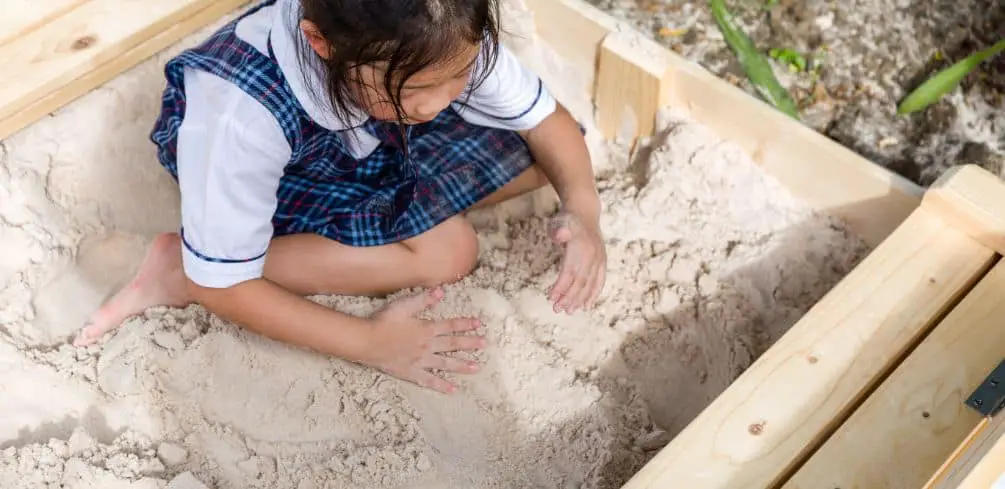
Play sand is a special type of sand that is perfect for use in children’s sandboxes. It is designed to be both safe and fun for kids; plus, it is also very affordable.
It’s generally made from a mix of fine-grained silica sand particles, as opposed to M Sand or construction sand. This type of sand has larger grains than beach sand and is free of any debris or microbes, ensuring that it will not harm your children while they play.
When purchasing play sand, it’s important to make sure that the product you buy meets safety standards. If the container says ‘playground quality,’ then you can be confident that the material has been tested and approved by safety standards organizations.
Additionally, some bags of play sand come with natural colors added in; this provides children with an extra sensory experience as they dig in their sandbox and makes playing even more enjoyable.
Play sand offers many benefits for young children, such as aiding with sensory development, providing entertainment, and promoting creativity. Plus, its low cost makes it accessible to many families who are unable to afford more expensive toys for their kids.
With all these advantages combined, play sand is an ideal choice for parents who want to provide a safe and enjoyable environment for their child to explore without breaking the bank.
Kinetic Sand
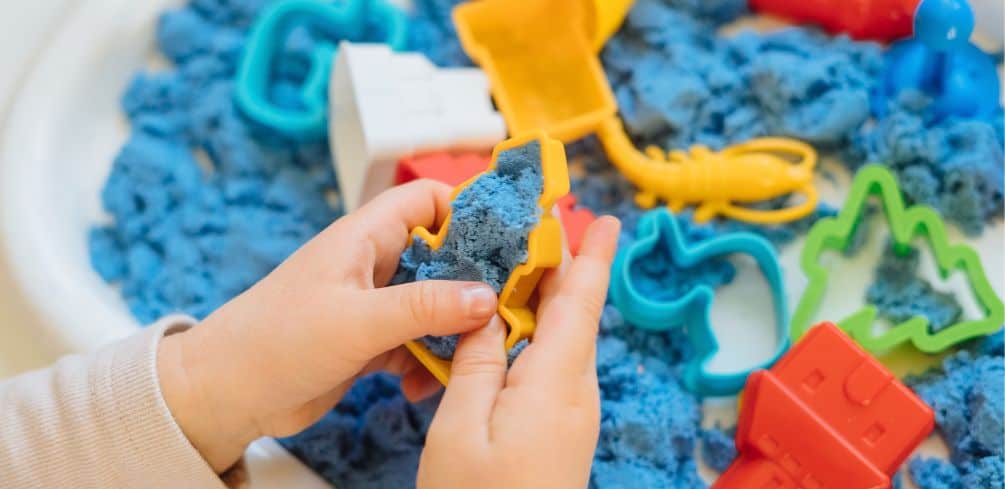
Now, let’s explore a different kind of sand: kinetic sand.
This type of sand is manufactured from 98% all-natural sand and 2% non-toxic polymer. It can be easily molded and shaped by hand, making it a great choice for building and sculpting projects.
Here are some of the benefits of kinetic sand:
If kinetic sand isn’t your thing, there are plenty of other types of sand that could suit your needs. Manufactured sand is made from crushed stone and is used in construction projects like concrete production.
Glass sand is made from recycled glass bottles and is often used as an abrasive in industrial processes. Olivine sand is an ultra-fine grain material that is often used in foundries as a molding material.
Garnet sand has sharp edges, which make it excellent for polishing and cutting applications. Black sand consists of heavy minerals like magnetite, which makes it useful for processing gold ore in a sluice box.
No matter what type of project you’re working on, there’s sure to be a type of sand that can help you get the job done!
With so many options available, you’ll have no trouble finding the perfect type for whatever task you have in mind.
Pit Sand

Pit sand is a type of construction sand that’s usually mined from an open pit. It’s composed of fine granular material and is typically yellow to orange in color.
Its grains are more angular than the sea sand, making it better for concrete production since its particles bind together better. Compared to fill sand, which is made up of small crushed rocks and dust particles, pit sand has larger grains and a coarser texture.
When used for construction projects, this type of sand must be washed because it often contains clay, silt, and other impurities. Washing the sand removes these impurities and makes it even more suitable for use in concrete production or as fill material.
Additionally, when compared to sea sand, pit sand has fewer salt crystals and other minerals, which could interfere with the bonding process of the cement used in concrete construction.
Pit sand can also be used as an aggregate material in landscaping projects like paths and driveways, where its angular shape helps provide greater stability to the surface when compacted by heavy machinery or foot traffic.
Its coarse texture also makes it ideal for filling large gaps between pavers or stepping stones, as well as providing drainage solutions on sloping landscapes.
Sea Sand
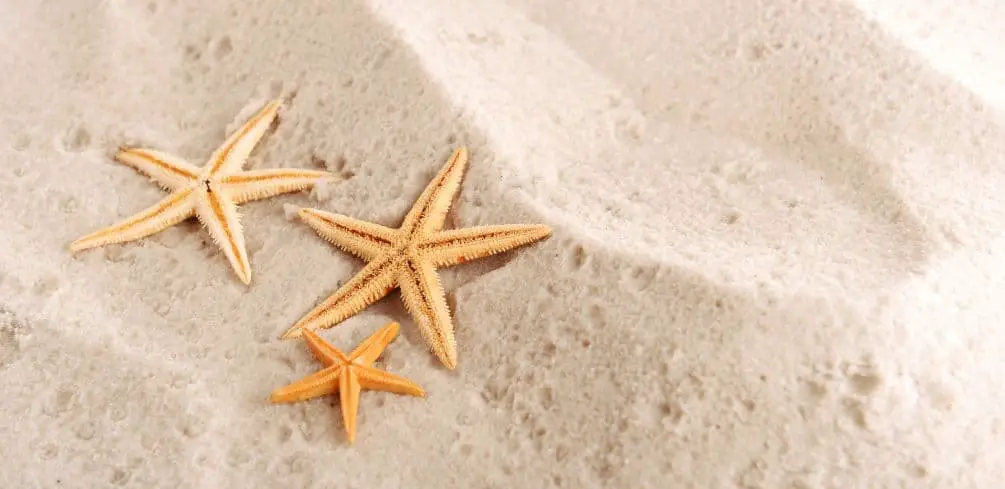
Having discussed pit sand, let’s move on to sea sand. Sea sand is a type of sedimentary rock consisting of weathered and eroded particles that originate from the land.
It is also known as beach sand, marine sand, or beach gravel.
Unlike pit sand, which is generally composed of quartz and feldspar particles, sea sand contains greater amounts of calcium carbonate and other minerals such as iron oxide.
| Sand Type | Characteristics |
|---|---|
| Sea Sand | Weathered and eroded particles Contains calcium carbonate and other minerals, such as iron oxide |
| Quartz Sand | Composed of quartz and feldspar Granular structure with sharp edges Good drainage properties |
| Coral Sand | Very fine-grained material Lightweight with bright colors Made up of shells and skeletal fragments |
| Green Sand | A mixture of clay material, silica, calcite and iron oxides Olive-green in color due to traces of iron oxide |
| Utility Sand | Coarse-grained material Stable and non-reactive Used for many industrial purposes like filtration systems |
Sea sand has various applications ranging from construction to landscaping. It is used in the manufacturing process for bricks, concrete products, and asphalt production.
Additionally, it can be used as a filtering agent for water treatment plants or aquariums. Sea sand can also be used in landscaping projects such as creating natural ponds or other outdoor decorations. The coarse texture makes it an ideal choice for this purpose.
In addition to its use in construction materials or landscaping projects, sea sand has many recreational uses, such as beach volleyball courts or playgrounds. Its fine texture allows for comfortable foot traction when walking on the beach or swimming in shallow waters near the shoreline.
Moreover, the presence of calcium carbonate helps stabilize pH levels in water bodies, making it suitable for fish life too!
To summarize, sea sand comes from erosion processes on land and contains different mineral compositions than pit sands do; it has multiple applications, including construction materials production, filtering agents, landscaping projects, or recreational uses – all while providing a safe environment for wildlife habitats!
Sharp Sand
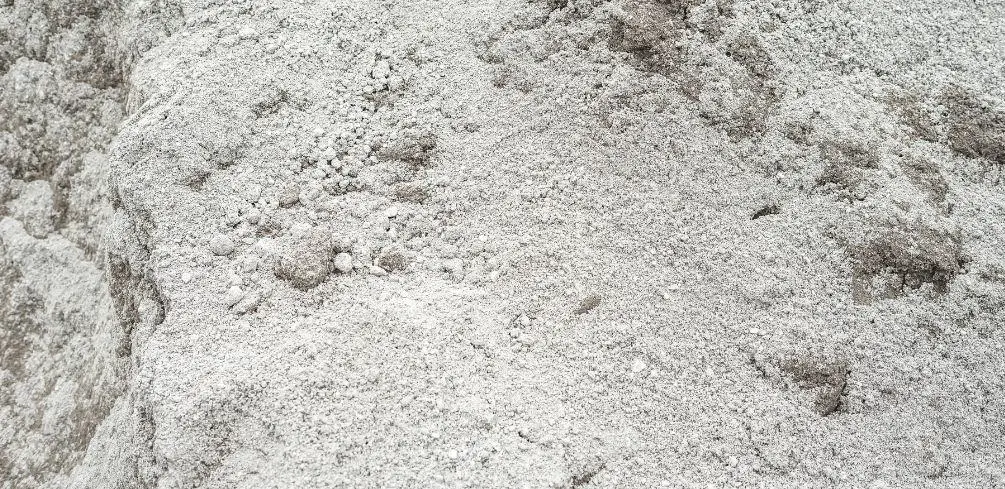
Sharp sand is a type of sand that contains silicon dioxide, and it’s often used in the construction and gardening industries.
It’s also known as grit, coarse sand, and builder’s sand. This type of sand is made up of small, sharp particles that give it its name.
Here are three ways to use sharp sand:
- Fill concrete – Sharp sand is often used to fill concrete foundations and pavements. It helps to create a strong bond between the surface and the cement.
- Creating slopes – Sharp sand can be used to create slopes in gardens or other outdoor areas. The small, fine particles allow for an even distribution of soil when creating a slope or ramp.
- Mixing with soil – Sharp sand can be mixed with natural sand or crushed stone sand to help improve drainage in garden beds or potted plants.
Sharp Sand is commonly used in many different applications due to its fine particles and its ability to bind well with other materials like cement or soil.
It’s an important tool for any professional involved in landscaping or construction projects because it can provide stability for structures and help improve drainage for gardens and planters.
Mason Sand
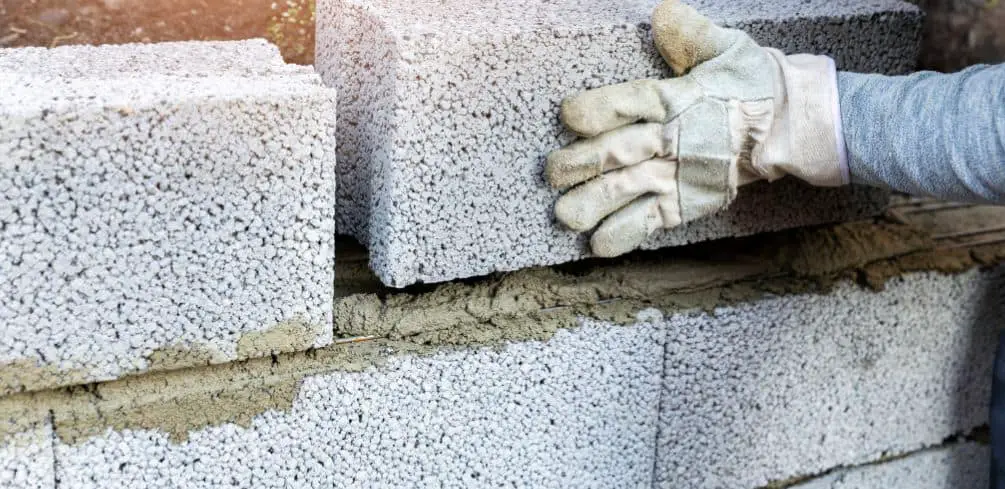
Mason sand is a fine-grained, light-colored sand used in the building industry. It’s also known as mortar or brick sand and is most commonly used for masonry work.
This type of sand has a very fine texture and contains tiny particles that are useful for mixing with cement to make mortar or concrete.
| Name | Description |
|---|---|
| Mason Sand | Fine-grained, light-colored sand |
| Used in the building industry | |
| Very fine texture | |
| Contains tiny particles |
The grain size of mason sand is usually smaller than other types of sand. This helps create a strong bond between the masonry material and the mortar.
It’s important to note that when using mason sand, you should wear protective gear such as goggles and gloves to protect against any dust particles that can irritate your skin or eyes.
Additionally, it’s best to avoid inhaling the dust by wearing a mask while working with it.
Mason sand is an essential tool in the building industry due to its small grain size and ability to mix with cement easily. Its versatility makes it suitable for many different applications, from creating mortar for laying down bricks to making concrete for sidewalks or driveways.
With its fine texture and tiny particles, mason sand provides a strong bond between materials while also helping create beautiful results.
Builders Sand
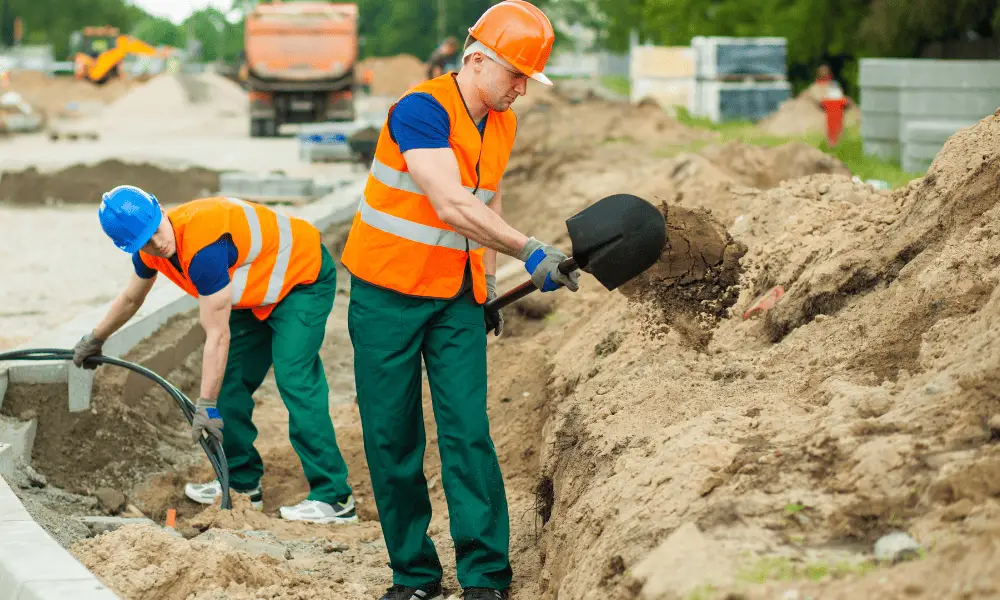
The next type of sand we’ll explore is builder’s sand. It’s a bit coarser than mason sand and has a lighter, more golden tone.
Builder’s sand is made up of fine grains, making it ideal for construction projects like laying bricks and creating walking paths. It’s also an excellent choice for use as a construction aggregate.
When it comes to landscaping, builders’ sand can be used to fill in crevices between pavers or flagstones, create soft play surfaces or add traction on slippery slopes.
Here are some other uses for builders’ sand:
- To help with drainage in gardens and flower beds
- As an additive to soil or potting mixes
- To prevent soil erosion in lawns, gardens, and flower beds
So there you have it – builders’ sand is the perfect material for all kinds of outdoor projects, from constructing pathways and laying bricks to helping with drainage in gardens.
Whether you’re looking for something to use as filler or improve traction on slippery surfaces, this type of sand is sure to come in handy!
Artificial Sand
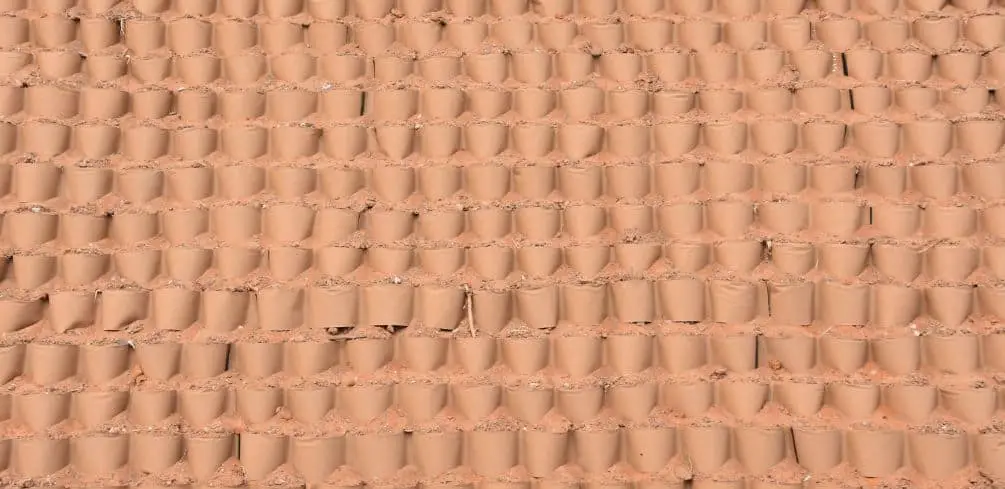
Artificial sand is a type of sand that is created through the process of mixing high-quality industrial quartz with very fine sand. It has been used in construction projects since the early 2000s as an alternative to natural sand.
This type of sand has a number of advantages over natural sand, including:
| Advantages | Disadvantages |
|---|---|
| Provides uniformity and consistency in surface texture | More expensive than natural sand |
| Reduces environmental impact | Quality can vary depending on where it’s sourced from |
| Highly durable and resistant to erosion | It can be difficult to find in certain places |
| Suitable for both indoor and outdoor use | Not as aesthetically pleasing as natural sand |
Artificial sand is often used as a base material for various building projects such as patios, walkways, and driveways. It also works well for playgrounds and other areas where children play.
It’s easy to maintain and provides a safe surface that’s less prone to slipping or causing injury. Additionally, it can be used in conjunction with other materials, such as gravel or concrete, for added durability.
Overall, artificial sand offers many benefits over natural sand, which makes it an attractive option for those looking for an alternative solution when constructing buildings or outdoor areas. The cost may be higher initially, but its long-term durability makes it a worthwhile investment.
Jointing Sand

Jointing sand is a type of sand that is used in the process of jointing. It can be found in many different forms, including dune sand taken from river beds or finely divided rock with uniform grain shapes.
This kind of sand contains a mix of materials such as shell fragments, silt, clay, and other small particles.
When using jointing sand to create joints between two pieces of material, it’s important to ensure that the joint is filled completely with the sand so that there are no gaps or hollows. This helps to keep the joint strong and prevents any movement from occurring between the two pieces.
Jointing sand also serves as a cushion for the joint and helps to reduce friction and wear on the parts.
The benefits of using jointing sand are numerous. It can provide better adhesion between pieces, increase durability, and even reduce noise levels when two components are joined together.
Additionally, it can help to improve insulation and prevent moisture from entering joints, making them more resistant to corrosion over time.
Jointing sand is widely used in construction projects around the world due to its versatility and efficacy in creating strong joints between different materials.
When selecting a type of jointing sand for your project, it’s important to consider factors such as particle size, material composition, porosity, and compressive strength in order to get a product that will meet your specific needs.
Concrete Sand
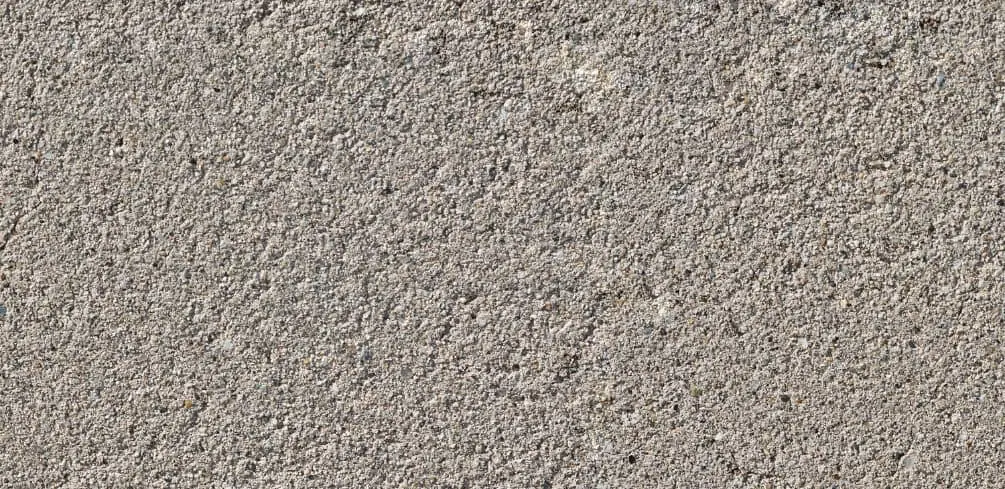
Concrete sand is a coarse, granular material made of crushed stone. It is primarily used in the production of concrete and asphalt but can also be used as industrial sand or for filling large holes. It is usually composed of organic matter and is often referred to as “washed” or “dry” sand.
The main purpose of concrete sand is to act as a coarse aggregate when mixed with water and cement. This mixture helps to create strong, reliable structures such as buildings, roads, and bridges.
The coarser the sand particles are, the better they bind together when combined with other materials. Concrete sand also helps to improve the texture and durability of the finished product.
Due to its ability to create strong structures, concrete sand has become an integral part of modern construction projects. It is highly versatile and can be used in a variety of ways, from creating walkways to filling potholes on roads.
With its many applications, it is no wonder that this type of sand has become so popular in recent years!
Beach Sand
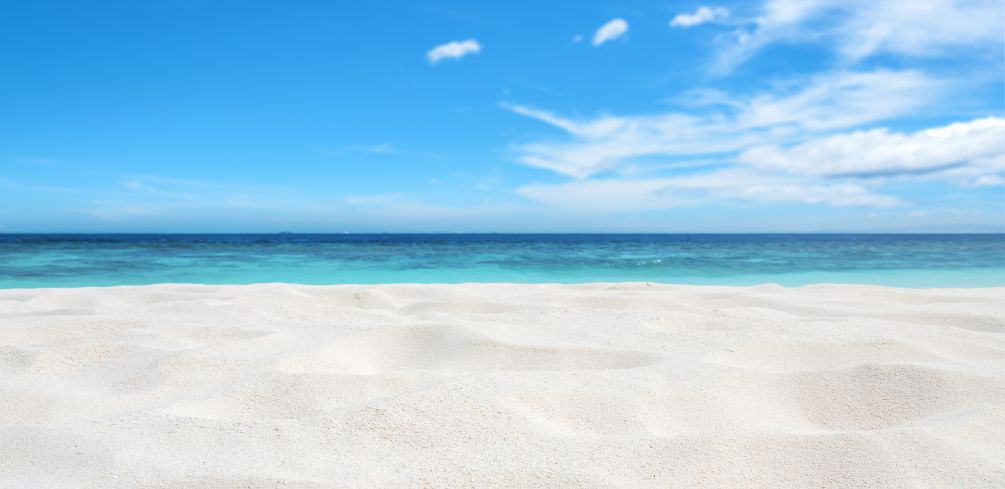
Beach sand is a popular sand type. Its soft, smooth texture and white-grey color often make it the desired choice for recreational activities.
Beaches are also known for their unique hues of pink sand, which come from the coral and shells found on the ocean floor. It’s an incredibly calming sensation to walk along the shoreline and feel this type of sand between your toes.
River banks are another source of beach sand, although it’s not as fine or light in color as its ocean counterpart. This type of sand is typically much darker in hue due to sediment deposits from the riverbeds, but it can still be used for outdoor activities like volleyball or building castles.
In fact, many people prefer this kind of sand because its coarser texture makes it easier to mold into shapes.
One thing to keep in mind when using beach sand is that it can be quite heavy compared to other types of sand; therefore, you may need more than one bag if you plan to use it for any large project.
Additionally, one should always check local ordinances before taking any beach sand home with them, as this may be prohibited in some areas.
Beach sand is a great option for outdoor recreation and creative projects alike, offering a unique experience with its natural beauty and variety of colors. Whether you’re looking for something finer or coarser in texture, there’s sure to be something that fits your needs perfectly!
Washed Sand
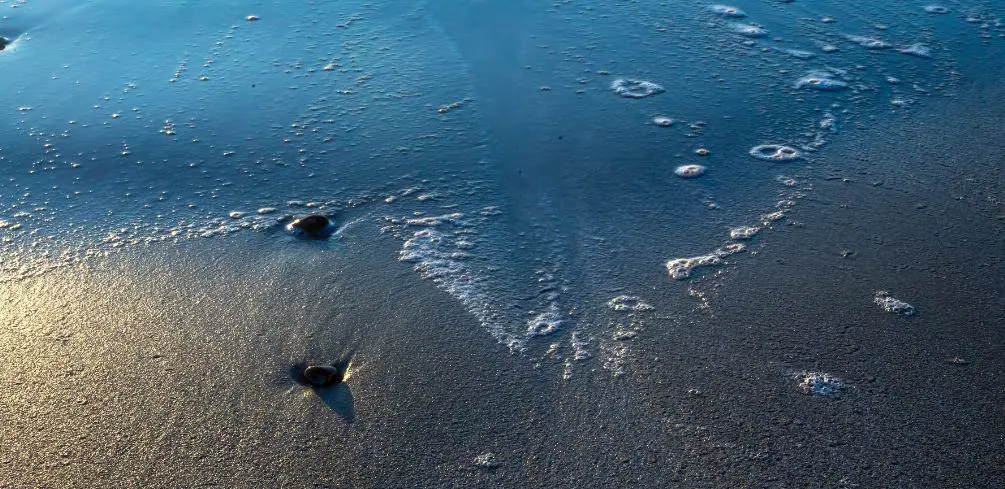
Washed sand is a type of sand that has been passed through a washing process. This removes any organically derived fragmental material, giving it a more consistent texture and look than other types of sand. It’s often used as a base material for construction projects due to its consistent texture and composition.
Washed sand is made up of primarily granite rock, which is then broken down into small particles. These particles are then washed with water to remove any organic materials before being packaged for sale.
As such, it has very little sediment or dirt mixed in with the grains of the sand. This makes it an ideal choice for use in building foundations, patios, and walkways, as it provides stability and won’t deteriorate over time like other types of sand might.
This type of sand can also be used in landscaping projects where the soil needs to be improved or leveled out. Washed sand can be added to soil to help retain moisture as well as provide a better structure for plants to grow in, making it an important part of gardening and landscaping design.
Overall, washed sand is an essential material for many construction and landscaping projects because it provides stability and consistency while remaining affordable and easy to work with compared to other types of sand.
Coarse Sand
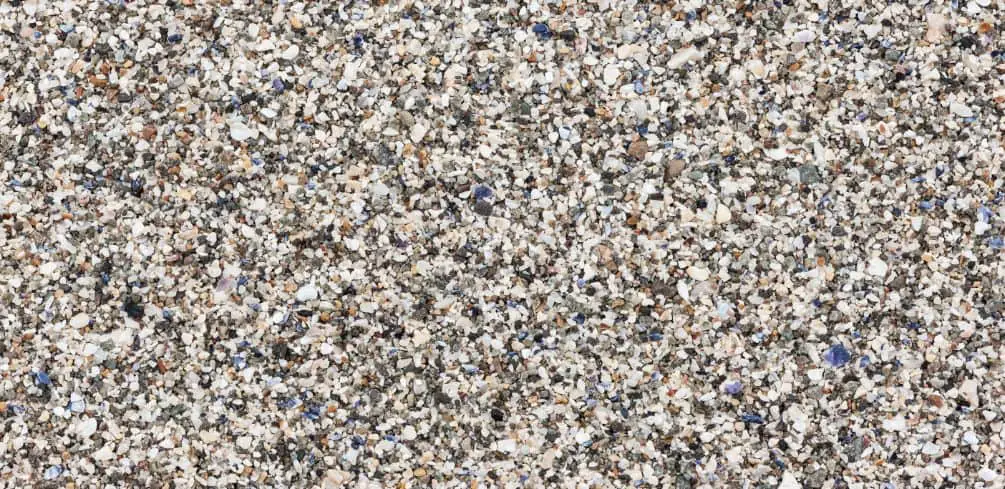
Coarse sand is one of many types of sand available today. It’s a great choice for large-scale construction projects, as it can be used to extract sand from the ground and then used for building materials.
| Properties | Uses |
|---|---|
| Large | Extraction |
| Heavy | Construction |
| Absorbs water easily | Filling voids in the soil |
Coarse sand is heavier than fine sand and absorbs water easily due to its large granules. This makes it an ideal choice when filling large voids in soil or creating a level surface on the ground. Moreover, since it’s so heavy, coarse sand can be used to extract other materials like clay or silt from the ground.
It’s also often used in construction projects due to its ability to absorb water easily. For instance, if you’re building a bridge or a dam, having coarse sand on site can help keep the structure strong and stable over time by absorbing any excess water that might seep through.
Additionally, coarse sand can be combined with cement to create concrete that’s more durable and less prone to cracking during construction.
Given its various uses and properties, it’s no surprise that coarse sand is a popular choice for large-scale construction projects. It’s relatively inexpensive compared to other types of sand and is easy to find in most areas around the world.
Whether you’re looking for something to fill voids in soil or use for extracting minerals from the ground, coarse sand will serve you well!
River Sand Or Natural Sand
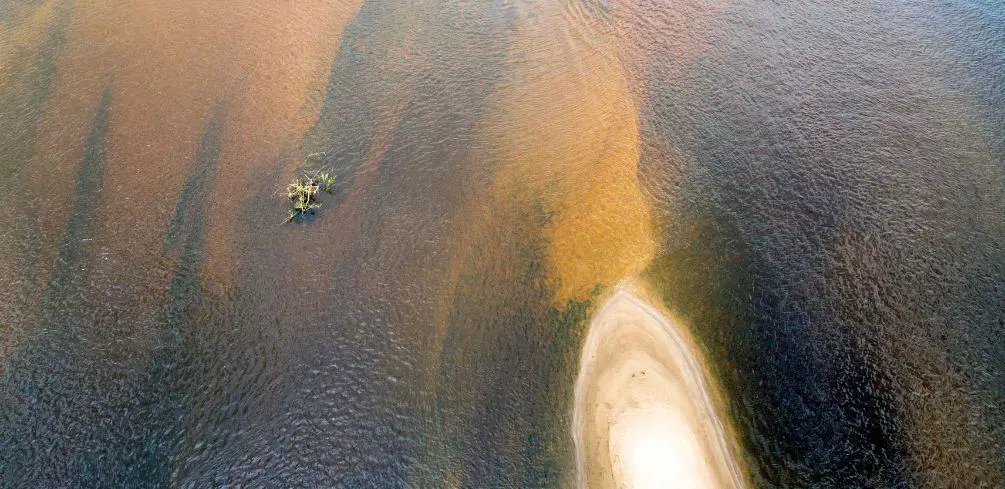
As we cross the bridge of Coarse Sand, we come to the shore of River Sand or Natural Sand. It’s like a voyage of discovery – a journey that takes us to the depths of Earth’s surface. Like an explorer, we find ourselves surrounded by a vast expanse of ever-changing textures and colors.
River sand is composed mainly of quartz particles, with smaller amounts of other minerals such as iron oxide and calcium carbonate. The sand grains are usually well-rounded and have a smooth texture that makes them ideal for use in construction projects.
The color can range from off-white to reddish-orange depending on the mineral content but is generally light tan or yellowish in color. River sand has been used for centuries to make mortar for masonry work and concrete mixes. Its versatility makes it one of the most popular types of sand available.
Here are five unique features that make river sand so special:
- It is naturally occurring on Earth’s surface
- It consists mostly of quartz grains
- The grains are rounded and smooth
- The color ranges from off-white to reddish-orange
- It has been used for centuries in construction projects
It is easy to see why river sand or natural sand has become so popular among builders and contractors over the years – its versatility and availability make it a great choice for a variety of applications.
Desert Sand

I’m sure you’ve seen desert sand in movies or on TV shows. It’s the kind of sand that’s been baked by the sun and is usually fine and powdery.
Desert sand is actually made up of tiny little particles known as grains. These grains are usually composed of quartz, feldspar, or calcium carbonate. Sand grains can range in size from 0.0039 to 2 millimeters in diameter, making them a unique form of granular material!
In terms of composition, desert sand can have a variety of elements, like silica oxide and aluminum oxide. This means that depending on where you are in the world, the composition and color of the sand can vary significantly.
For example, if you’re in Nevada you might find sand with a more yellowish hue due to the presence of iron oxide; whereas if you’re in Arizona you might find more red-hued grains because it has an abundance of magnesium oxides.
The size and composition of desert sand mean that it can be used for a variety of purposes, like construction projects or beach volleyball courts. And because it’s so fine, desert sand can also be used as an abrasive tool for cleaning or polishing certain surfaces.
So if there’s ever a need for some coarse material to help get rid of dirt or debris, desert sand may be just what you need!
To sum up, desert sand is made up of tiny particles composed mainly of quartz, feldspar, and calcium carbonate; its size and composition vary depending on where it originates from; and its abrasive properties make it ideal for cleaning or polishing certain surfaces.
Medium Sand
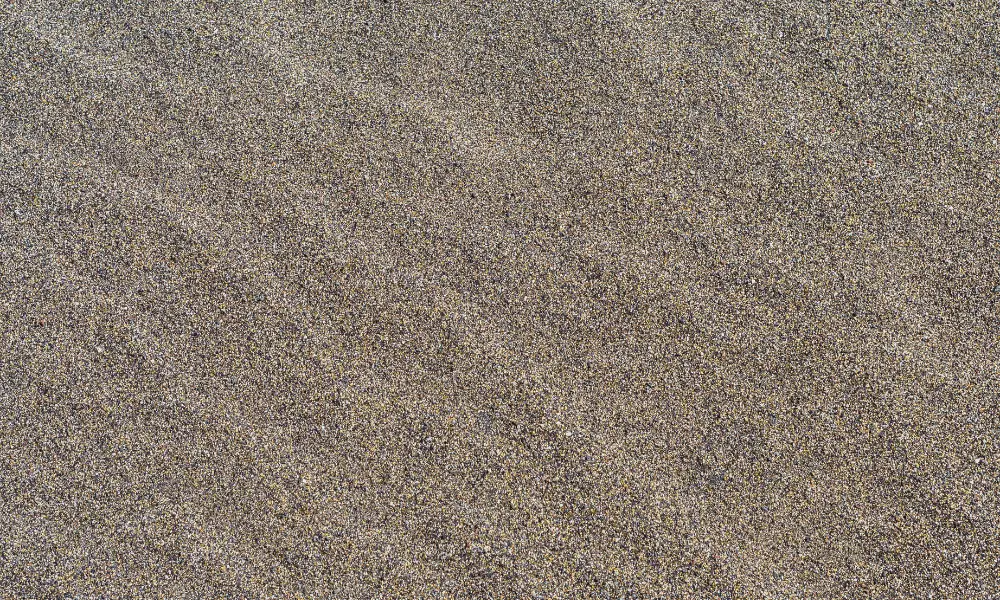
Medium sand is like a bridge between the two extremes of fine sand and coarse sand. It has a consistency like that of a happy medium, offering the best of both worlds.
It’s coarser than fine sand, so it can be used to fill up gaps and create a more solid surface. At the same time, it’s not as abrasive as coarse sand, making it easier to work with when completing construction projects. Medium sand is often referred to as concrete sand, M Sand, or manufactured sand, depending on its specific composition.
This type of sand is the ideal choice for many construction projects, such as laying foundations and creating pathways, due to its resilience and strength. In addition, it can also be used in landscaping projects because of its ability to work well with concrete mixers.
Medium sand also helps reduce soil erosion by stabilizing the earth around it, making it an excellent ground covering for gardens and landscapes.
Medium sand is versatile enough for use in a variety of projects yet sturdy enough to withstand harsh weather conditions and regular wear-and-tear from daily use. This makes it an ideal choice for anyone looking for a reliable material that will stand the test of time.
Volcanic Sand

Volcanic sand is a unique type of sand that is formed from the solidified lava and ash of volcanoes. It is typically made up of tiny particles of glass, olivine, and garnet. This type of sand is usually black or dark gray in color due to its volcanic origins.
The glass component in volcanic sand comes from molten lava, which forms tiny pieces of glass when cooled quickly. Olivine sand is created by the breakdown of olivine crystals found in some types of volcanic rocks. Garnet sand consists of silicate minerals that were formed during the eruption process.
Volcanic sand has a variety of uses today. It can be used as an abrasive for cleaning and polishing surfaces or for making molds for jewelry and sculptures. The unique texture also makes it popular as a natural decoration for aquariums and other decorative displays.
Ultimately, its abundance and availability make it an attractive choice for many projects requiring sand.
Utility Sand

I’m sure you’ve heard of utility sand before, but do you know what it is?
Utility sand is a type of construction sand that is used for many purposes. It’s usually composed of river sand, fill sand, and other types of aggregate.
Utility sand can be used in many ways, such as:
It’s important to use the right type of utility sand when tackling any project. River sand has been screened to remove impurities such as rocks and organic matter.
Fill sand is also free from these contaminants but may contain some clay particles. Depending on your needs, you’ll have to decide which type will work best for you. Whichever one you choose, make sure that you purchase enough to complete the job without running out!
Mixing Sand
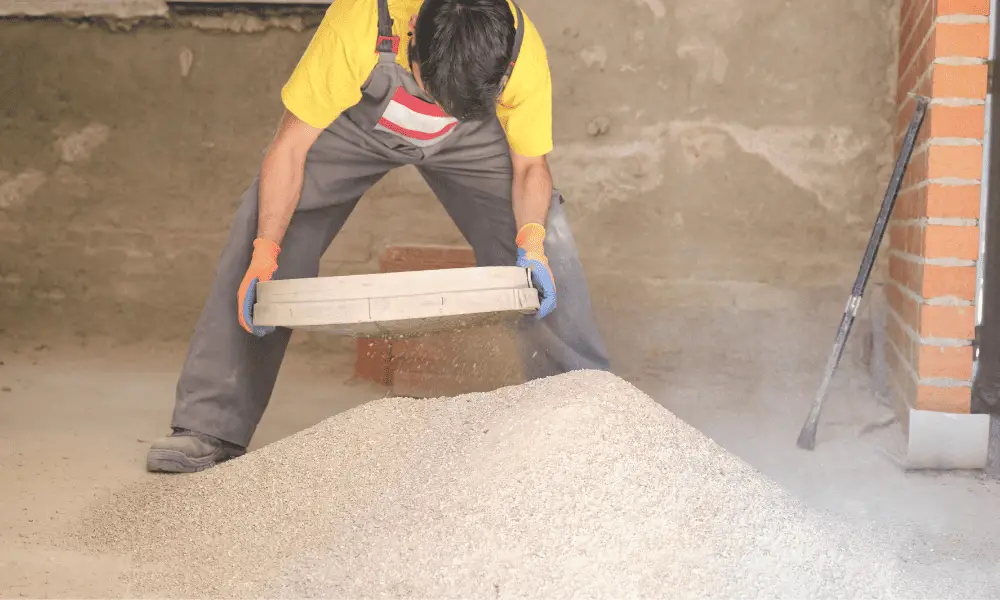
It’s a common theory that you can mix any kind of sand together, and it will all work out just fine.
But is this really true?
It’s important to consider the physical characteristics of each type of sand before deciding whether or not to mix them. Pit sand, sea sand, silica sand, and artificial sand all have different properties which must be taken into account.
Pit sand is made up of coarse particles which tend to clump together when wet. Sea sand is finer than pit sand and has a higher salt content due to its proximity to the ocean.
Silica sand is finer still and contains quartz particles which are highly resistant to erosion. Artificial sand is created by crushing rocks and stones into a powder-like substance and typically contains no clay particles.
All these types of sand have one thing in common – they don’t mix well with each other! When mixed together, they form an unstable mixture which could cause problems with building stability or even lead to landslides in certain conditions.
Therefore, it’s best not to mix different types of sand unless absolutely necessary. If you must mix them, make sure you know the exact composition of each type before doing so!
Gypsum Sand
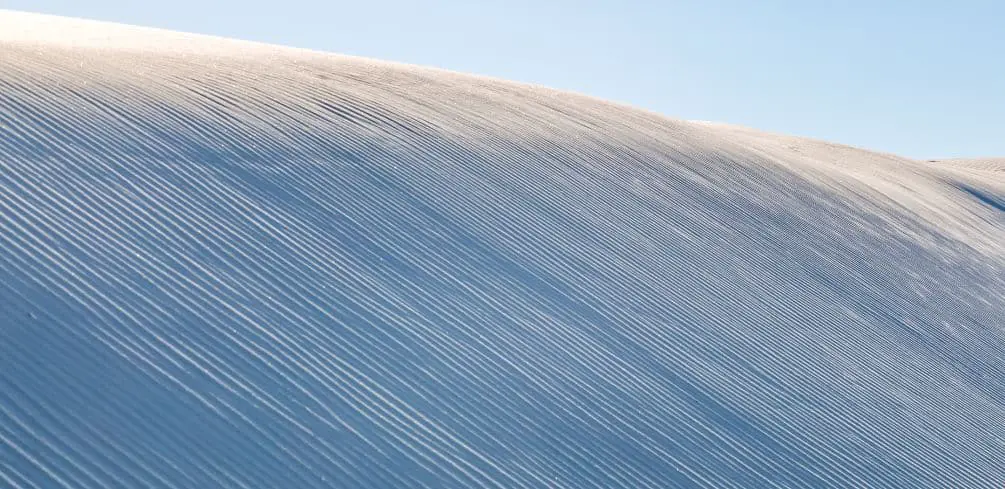
Gypsum sand is a type of sand made up of silicon dioxide and calcium sulfate. It is coarser than regular sand and has a yellowish-white color. This type of sand is naturally occurring, unlike other forms of coarse sand which are produced by humans.
It’s interesting to note that gypsum sand can be used in many different ways. For example, it can be used as a beneficial soil amendment or fertilizer due to its high content of sulfur and calcium.
In addition, it can be used as an alternative to salt for de-icing roads during winter months. Gypsum sand is also often mixed with cement for use in construction projects such as drywall and roadbeds.
Finally, there are numerous applications for gypsum sand beyond those mentioned above. This type of sand is incredibly versatile and can make all sorts of tasks easier – from gardening to building roads and more!
With so many uses, it’s no wonder gypsum sand has become so popular over the years.
Frequently Asked Questions

Are All Types Of Sand Safe For Use In Aquariums?
When it comes to using sand in aquariums, you may be wondering if all types of sand are safe. The short answer is that not all types of sand are safe for aquariums, and understanding the different types can help you make an informed decision.
To start, here’s a quick numerical list of what you need to know:
- Not all types of sand are suitable for aquariums
- Different sands have different properties that make them more or less suitable
- Researching the type of sand you want to use is essential for safety
Play sand and kinetic sand, which are both popular choices for children’s play areas, can both be dangerous if used in an aquarium. Play sand is often too abrasive for fish and other aquatic species, while kinetic sand can clump together and create harmful pockets that trap air or gas bubbles underwater.
On the other hand, natural beach or pool filter sands are usually ideal for aquariums because they contain fewer impurities than other varieties and won’t damage delicate scales on fish or plants.
That being said, it’s still important to research any type of sand before introducing it into your aquarium environment – even the natural beach or pool filter sands. Some natural beach sands may contain sharp pieces of shell or rock that could hurt your fish and plants; likewise, pool filter sands may contain chemicals like chlorine that aren’t suitable for use in aquariums either.
To ensure safety, always read the packaging label carefully or contact your local pet store before purchasing any type of sand for use in your aquarium.
Safety is a priority when it comes to using any material in an aquarium environment – especially when dealing with different types of sand! Doing the proper research before introducing a new material will help ensure the best possible outcome for both you and your aquatic friends alike.
What Is The Environmental Impact Of Sand Mining?
Sand mining is the extraction of sand from beaches, rivers, and ocean beds for use in construction and industrial processes. It has a profound impact on the environment, yet its effects are often overlooked. To understand the full scope of this issue, it’s important to consider a few examples.
Take, for instance, the case of India’s Thane Creek Flamingo Sanctuary. The sand dredging activities taking place in this sanctuary have caused considerable disruption to the local ecosystem. Not only have large portions of the sanctuary been destroyed, but also populations of endangered birds like flamingos have been drastically reduced due to habitat loss.
This example clearly illustrates how sand mining can cause significant damage to fragile ecosystems and endanger wildlife species.
The environmental impacts of sand mining go beyond the direct destruction of habitats and wildlife; they can also include air pollution and water contamination. Mining operations can stir up silica dust particles which can be inhaled by workers and nearby communities, leading to illnesses such as silicosis or even lung cancer.
Furthermore, sediment runoff from these activities can contaminate nearby bodies of water, making them unsuitable for drinking or recreational purposes.
These are just a few examples that demonstrate why sand mining should be carefully monitored and regulated in order to protect our planet’s ecosystems and safeguard human health. We must work together to ensure that proper policies are put in place so that future generations will not suffer from their consequences.
How Much Sand Do I Need For My Project?
Figuring out how much sand you need for a project can be challenging. Whether you’re building something small, like a sandbox, or something bigger, like a beach volleyball court, it’s important to know exactly how much sand you’ll need to get the job done right. Knowing the right amount of sand will help ensure that your project turns out just as you imagined it.
One way to figure out how much sand you’ll need is by measuring the area you plan on covering. Measure the width and length of your project and then multiply those numbers together to get the total area in square feet or meters.
Once you have this number, divide it by how deep you want your layer of sand to be. This will give you an estimate of how many cubic feet or cubic meters of sand your project will require.
Making sure that your project has enough sand is important for its success. If there’s not enough sand, your project won’t be structurally sound and may not look as good as it otherwise would have.
On the other hand, having too much sand can also cause problems – it will cost more money and result in unnecessary waste. Taking the time to measure accurately will ensure that your project looks great and works properly when finished!
Are There Any Health Hazards Associated With Sand?
Treading through the sand is like walking in a sea of endless possibilities. But are there any health hazards associated with sand? The answer to this question depends on the type of sand and how it’s being used.
For example, if you were using silica-based sand for a project, there would be some cause for concern. Inhaling silica-based particles can lead to serious respiratory illnesses such as lung cancer and silicosis. It’s important to take the necessary safety precautions when working with this type of sand, such as wearing a face mask or respirator.
On the other hand, if you’re using play sand or beach sand in your project, the risk of exposure to hazardous materials is much lower. As long as it is not exposed to toxins or pollutants, these types of sand are generally considered safe for use in recreational activities or creative projects.
It’s essential that you take the time to research which kind of sand is best suited for your needs and understand any potential risks before beginning your project. Being aware of potential hazards will help ensure everyone’s well-being and success in achieving their goals.
How Is Sand Used In Construction Projects?
Sand is a versatile material that can be used in many construction projects. From creating concrete to back-filling deep trenches, sand is the backbone of many projects.
In fact, here are four ways that sand is used in construction:
- Making Concrete – Sand is an essential ingredient in making concrete as it helps to bind the cement and other materials together into a strong, solid form.
- Back-Filling Trenches – When building roads or laying the foundations for buildings, and sand is often used as back-fill material in deep trenches to help keep the trench stable and secure.
- Creating Mortar – Sand is also very effective when it comes to making mortar for brickwork or stone masonry walls. It helps to bind these materials together and create a strong bond between them.
- Landscaping – Sand can be used in landscaping projects, too, such as creating pathways or filling in low spots on your lawn. This helps to create a smooth surface that’s easy to walk on and helps prevent soil erosion.
When using sand for any construction project, it’s important to ensure that you are using the right kind of sand for the job at hand. Different types of sand have different properties, which may not be suitable for certain tasks so it’s important to do some research beforehand to make sure you’re using the right type of sand for your project.
Additionally, safety should always come first when working with sand, so make sure you wear protective gear when handling it and take all necessary precautions before starting work on any project involving sand.
Using the right type of sand can make all the difference when it comes to completing construction projects successfully, so take your time researching what type of sand will best suit your needs before getting started!
Is Sand A Renewable Resource?
Have you ever wondered if sand is a renewable resource? We all know that sand is an important part of many construction projects, but we don’t always think about where it comes from and if it’s sustainable.
Our current understanding of this topic has us asking whether or not sand is indeed a renewable resource.
When I was growing up, I remember playing in the sand on the beach with my family. It seemed like an endless supply of the substance – never-ending and constantly replenished by the tide.
But now that I’m older, I’m beginning to understand that there might be more to it than what meets the eye. It turns out that there are different types of sand, some of which are renewable while others are not.
For example, some sands are made up of quartz particles that come from rocks breaking down over time due to weathering processes. This type of sand can be replenished as new rocks form over time and break down into smaller particles.
However, other types of sand are created from coral reefs and shells, which take much longer to regenerate and therefore aren’t considered a renewable resource. As human activities such as mining for beaches strip away natural sources of sand faster than nature can replace them, it’s important to remember that not all sands are created equal when it comes to sustainability.
It’s clear then that although some types of sand may indeed be considered renewable resources, others are not as easily replaced – making it important to consider the source before using them in construction projects or other applications where sustainability is a priority. With careful consideration and conservation efforts, we can ensure our planet’s sandy resources remain abundant for generations to come!
Conclusion
Sand is an incredibly versatile and important resource to humanity. It’s used in construction projects, land reclamation, glass making, and even for recreational purposes like sandcastles and beach volleyball. In recent years, however, the environmental impact of sand mining has been increasingly scrutinized.
It’s estimated that over 24% of the world’s beaches are eroding due to human activity, such as sand mining. This has significant implications for coastal communities that rely on beaches for protection from storms as well as tourism revenue.
It’s clear that we must use this valuable resource responsibly. We should educate ourselves about the different types of sand available and take steps to reduce our reliance on mined sand when possible.
For example, using soil or recycled materials in construction projects can help us conserve this precious resource while protecting our environment at the same time.

